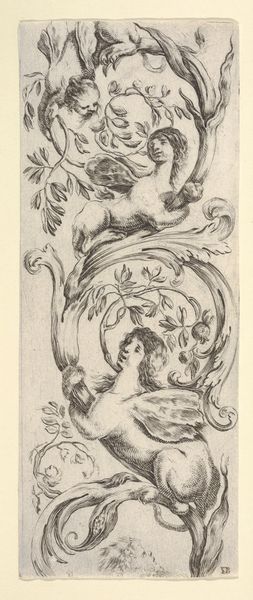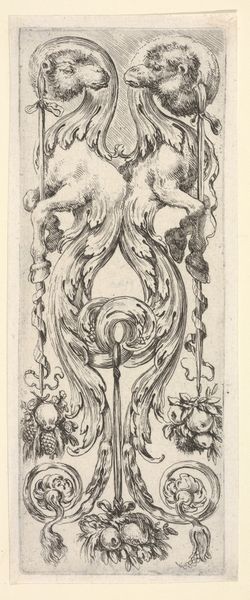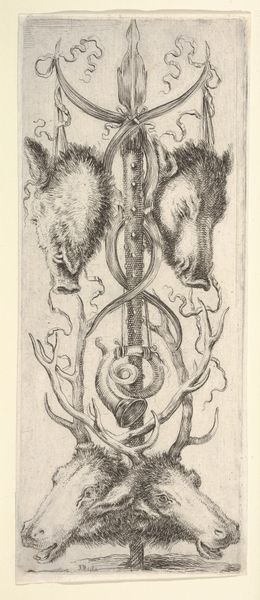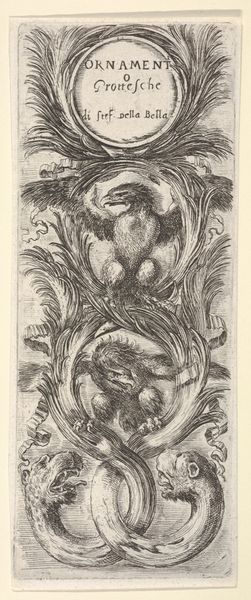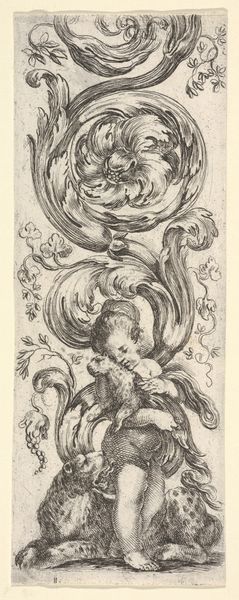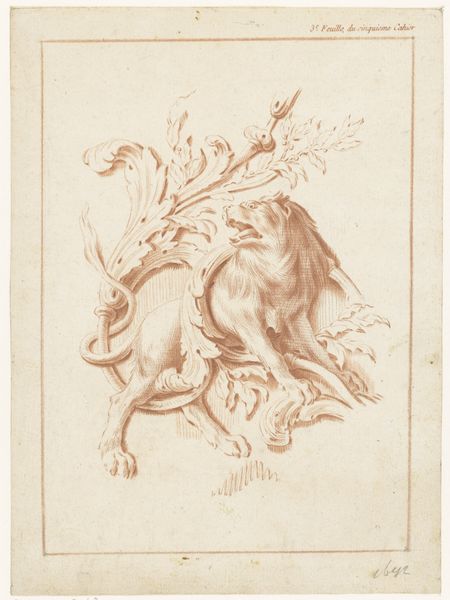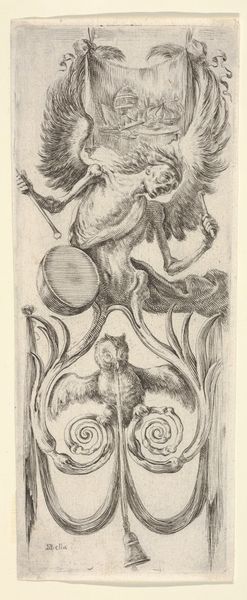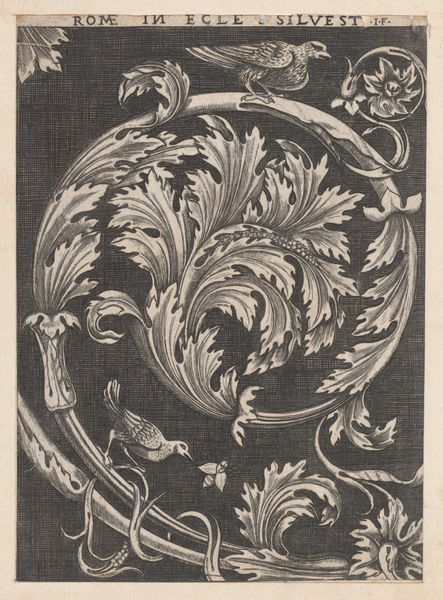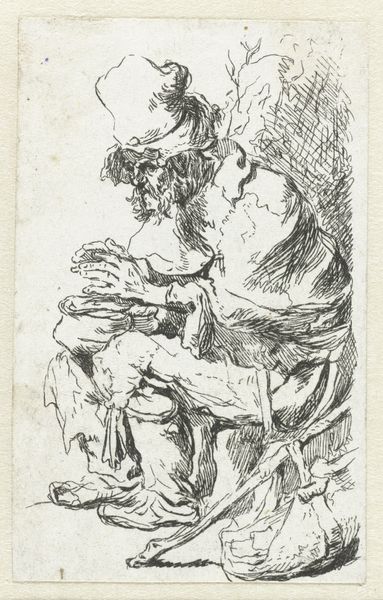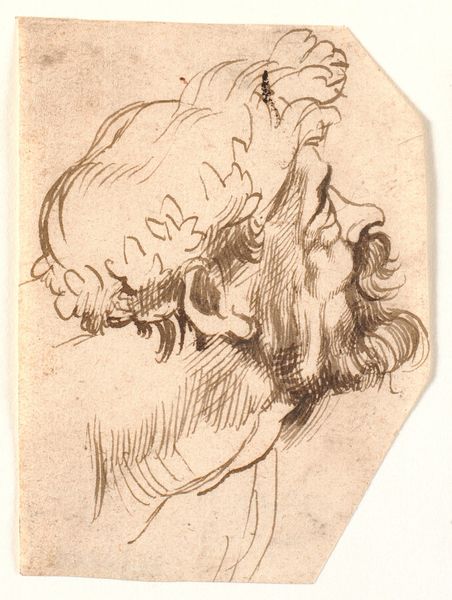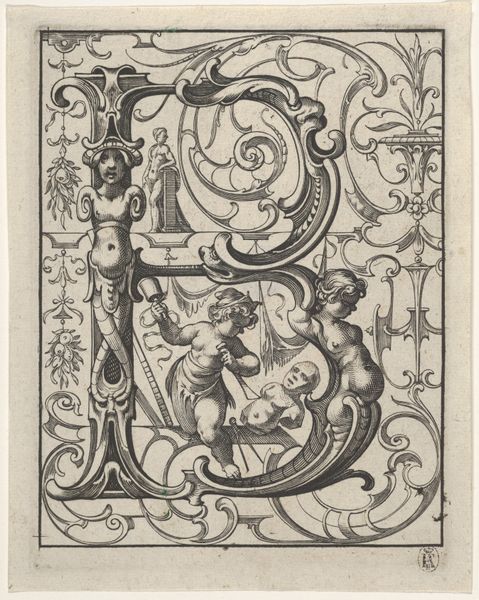
Three goats climbing a vine in the shape of a backwards 'S', from 'Ornaments or Grotesques' (Ornamenti o Grottesche) 1650 - 1656
0:00
0:00
drawing, print, engraving
#
drawing
#
baroque
#
animal
# print
#
landscape
#
engraving
Dimensions: Sheet: 6 7/8 × 2 11/16 in. (17.4 × 6.8 cm)
Copyright: Public Domain
Curator: What a curious scene—Stefano della Bella’s print, "Three goats climbing a vine in the shape of a backwards 'S'," produced between 1650 and 1656. It's currently housed at the Metropolitan Museum of Art. Editor: Playful, but also a bit unsettling. The monochromatic quality, that swirling vine, and the precarious positions of the goats create a strange tension. Curator: These kinds of decorative prints were all the rage. Artists like della Bella captured a taste for the grotesque in ornamental designs, and this piece definitely plays with asymmetry, dynamism, and the blurring between the natural and artificial. What do the goats suggest to you? Editor: Goats are interesting symbols, often representing both fertility and mischievousness. Their placement on the vine almost feels like they're participating in a dance, or perhaps a comical ascent up some kind of social ladder. The reversed S also lends a feeling of inversion or opposition, like a subtle rebellion against established order. Curator: Indeed! The backward “S” is a puzzle; it could be purely ornamental, or as you suggest, signal an intention to subvert visual expectations. It's worth considering that the goat was a common motif in Renaissance and Baroque art. Here, they are less symbols of the Devil or vice but perhaps metaphors for virility or untamed nature being domesticated into ornament. What do you make of their positioning on the vine? Editor: They seem confined. Despite their freedom to climb, they’re restricted by the S-shape, like figures trapped within a predetermined design. It makes me think about how these types of images functioned. Weren't they supposed to offer designers a vocabulary for creativity? To spark new aesthetic ideas within rather strict constraints? Curator: Absolutely. These “grotesques,” like elements in dreams, can unleash unexpected symbolic associations when seen and re-seen by different eyes. Their initial appeal lies precisely in that—a controlled unruliness, channeled within clear boundaries. The engraving technique itself seems so precise. The lines create so much depth in this intricate scene. Editor: Right, and while these images became embedded in interior design, from wallpaper to furniture, they subtly shaped tastes and desires. It also strikes me how the scale of this print affects its viewing. This piece probably feels quite intimate up close. Curator: An intimate window into a world of playful yet contained visual imagination. I appreciate how our discussion helped bring its multiple historical contexts alive, including the original ornamental function of the image, and potential interpretation as visual symbols. Editor: Yes, considering that original function adds to the piece and makes one realize that it served as both art object and sourcebook of ideas for visual culture, reflecting our long fascination with visual embellishment.
Comments
No comments
Be the first to comment and join the conversation on the ultimate creative platform.
